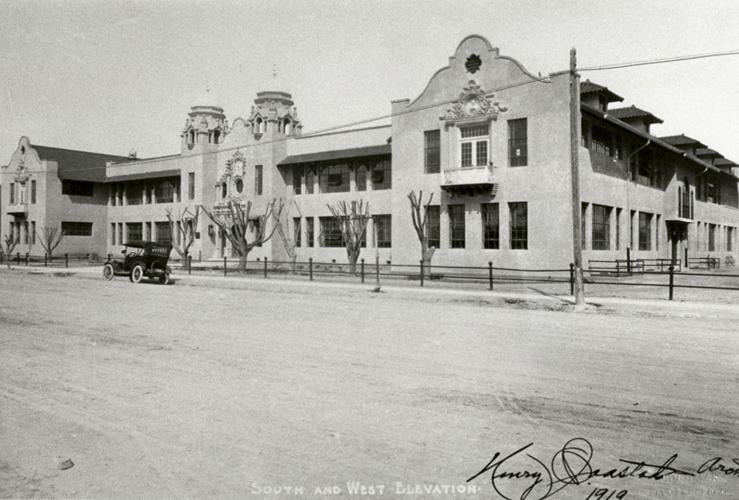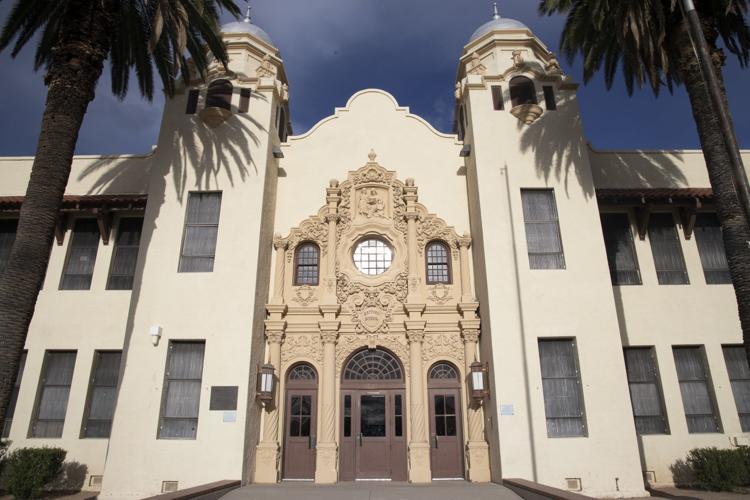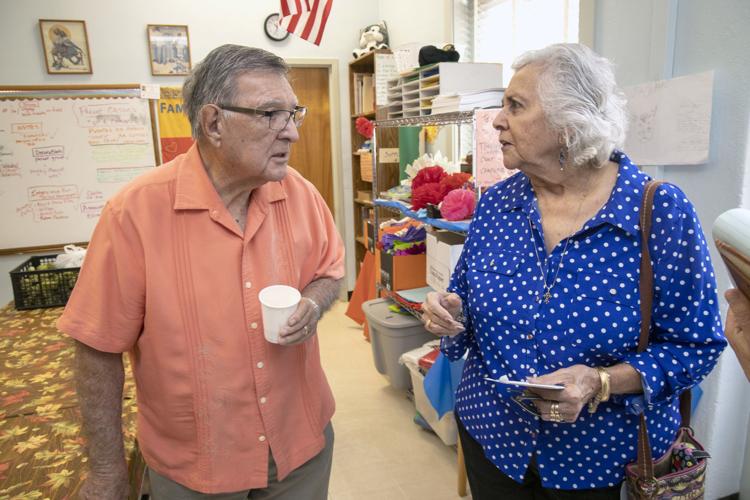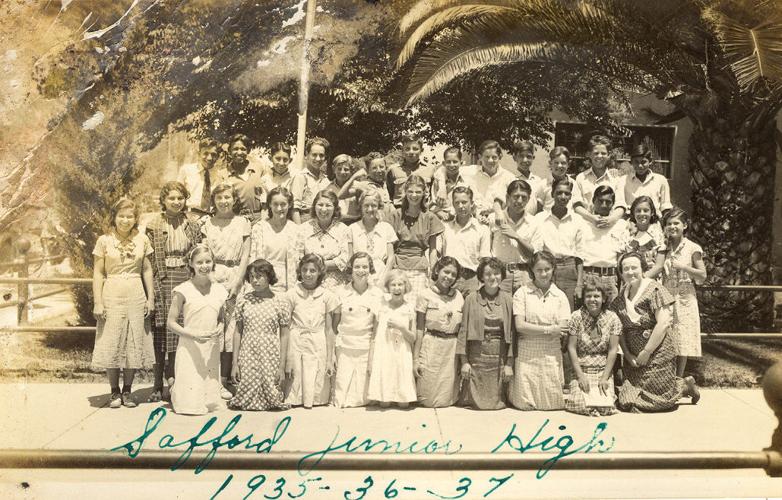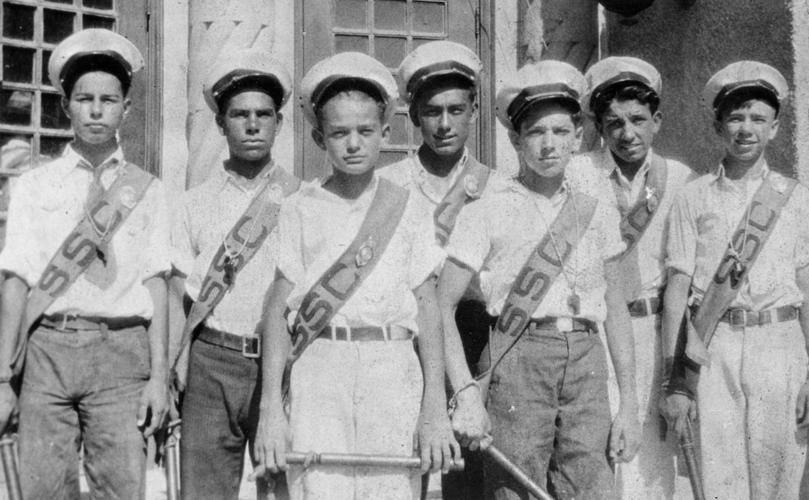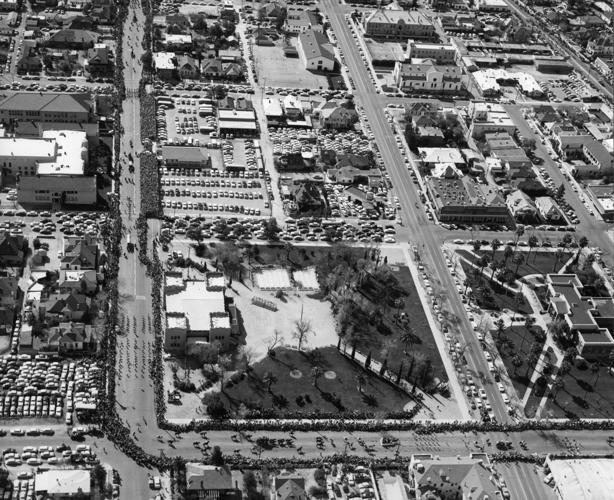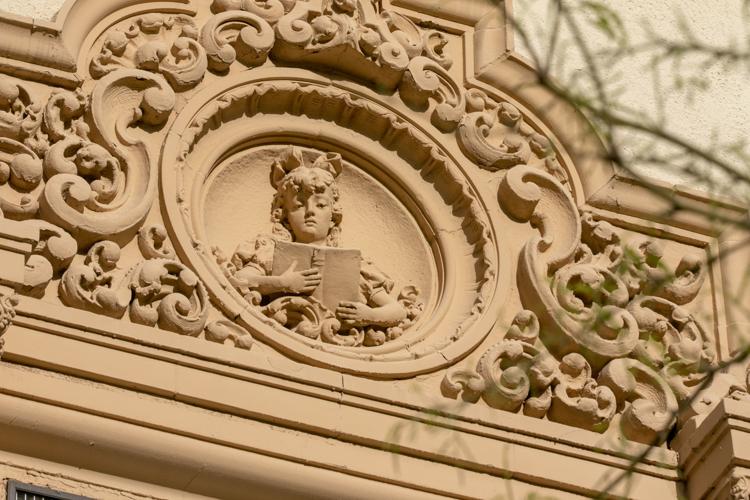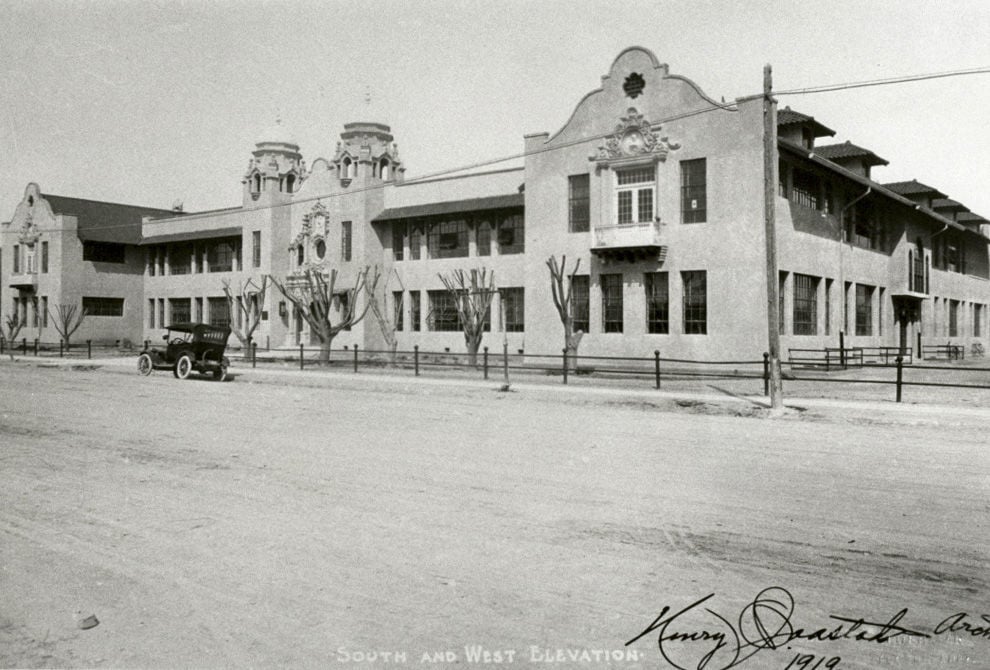If the walls of Safford K-8 School could talk, they could tell stories of about 100,000 students and hundreds of teachers who walked the halls and sat in the classrooms over the past 100 years.
Stories of friendships and flirtations. Championships and concerts. Teachers who inspired, and others who were despised. Things that have changed, and things that have remained the same.
Some of those stories will be shared when alumni and the community gather at the school during the 100-year celebration from noon to 4 p.m. Saturday, April 27.
A project of the Student Leadership and Service/Student Council, the afternoon will include school history displays, campus tours, live music and entertainment such as face-painting.
“There will be food trucks from everywhere,” says eighth-grader Andrew Mesa.
“We hope all those who attended Safford will want to be part of the event by visiting that day,” says Principal Kendra Tate. “It will be a time to recapture memories.”

The two-story Safford K-8 School is an example of Spanish Colonial Revival architecture and features a carved portico that frames the entrance and is flanked by two domed towers.
THE BUILDING
Safford school’s roots extend to 1888, when the Plaza School was built. The school was renamed in 1904 to honor Anson Peacely-Killen Safford, who was the third territorial governor of Arizona, 1869-1877. He worked to create the public education system and earned the moniker “father of the Arizona public schools.”
The downtown school burned in 1917, was rebuilt and opened for the 1918-1919 school year.
The two-story Safford school building, at 200 E. 13th St., is an example of Spanish Colonial Revival architecture and features a carved portico that frames the entrance and is flanked by two domed towers, according to the Society of Architectural Historians Archipedia, an online encyclopedia of American architecture. Henry O. Jaastad was the architect of record and Anne “Rocky” Rockfellow was responsible for the school’s design.
“You feel connected to the past,” says Tate. The school strives to keep the historic aspects of the 100-year-old school and meet the needs of 21st century students.
The Tucson Rodeo Parade once marched in front of the school along Fifth Avenue, which connected 13th and 14th streets. The road is gone and the grounds are enclosed by fencing. The building faces sidewalks that link other buildings and the grass schoolyard where students play soccer during their lunch break.

The La Fiesta de los Vaqueros Tucson Rodeo Parade turns the corner from Fifth Avenue to 12th Street, north of Armory Park. Note the old National Guard armory building on the left side of the park. It was demolished to make way for the senior center. Fifth Avenue used to pass directly in front of Safford School (upper left). It now dead-ends there.
The original lighting fixtures, though not illuminated, hang next to the fluorescent fixtures above the wood, flip-up theater seats in the auditorium. The seats, some scratched with the initials of former students, are the original seats, says Pat Ponce, the school’s family liaison.
Julieta Bustamante Portillo, 84, remembers concerts and plays in the auditorium, singing in the chorus and girls wearing black pencil skirts that were hemmed below the knee. They thought they were very chic. Portillo says she attended the Safford elementary and middle schools and went on to Tucson High.
Safford students are planning a slideshow in the auditorium at the April 27 celebration.
Indentations in the plaster-covered brick exterior walls outline former windows that once let the sun shine in, indicating some of the retrofitting and renovation to the school. Whiteboards and interactive boards used with computers and stylus-like pens have replaced slate boards. There are no clouds of chalk dust.
Safford grad Arnold Elias, who was the postmaster for Southern Arizona, New Mexico and West Texas and served in the Arizona Legislature, says he learned “real-life skills at Safford.”

Former students Arnold Elias and Julieta Bustamante Portillo talk prior to touring their old school. Portillo remembers the fashion rage when she was there was black pencil skirts.
Elias, 85, says he was busy with band and sports at the middle school.
“The teachers taught trust, hard work and to treat others as you’d like to be treated,” he said. “They steered us in the right direction.”
“It is our hope that during the day, former Safford alumni visiting might see familiar faces of past schoolmates and have the opportunity to reminisce about their years at Safford,” says Tate.
YESTERDAY AND TODAY
Social dances were once held in a basement room, says alumna Alice Leon Silvas. Well, actually, the boys stood against the wall and the girls danced, adds Elias.
Another room in the school basement houses the heavy-duty equipment that keeps the school warm and cool, stores books, and is where skulls, skeletons and other creepy odds and ends have been held for the annual Halloween haunted basement that’s organized by the Student Leadership.
While organizing the basement earlier this month, Student Leadership members discovered a hidden storage area in the wall. Through a thick layer of dust and plenty of cobwebs, the students found boxes filled with tarnished silver and marble trophies (unlike today’s plastic varieties) and original, framed photographs dating into the 1920s.
“I’m a curious person,” says Mercedes Millan, who’s in the seventh grade. Undaunted by the dirt, she dug right into the long-forgotten storage space.
“I wanted to see what was hidden,” says Vivianna Valenzuela, an eighth-grader who was in the hunt for the remnants of the past.

This Safford Junior High School class picture is from 1937.
The students have been cleaning and organizing the trophies and photos for display at the 100th anniversary celebration, says Diane Dean, Student Leadership adviser.
A portrait of Gov. Safford, donated by the Daughters of the American Revolution, was found in the basement and will be on display during the April 27 event, says Tate.
Among the cache stuffed in the wall were boxes of pots, pans and cooking utensils that are leftovers from classes no longer taught in middle schools — cooking, sewing, general shop and wood shop.
Lockers have gone the way of home ec classes.
Silvas recalls her mother buying her a metal lunch box to prevent mice from nibbling on her lunch when it was in her locker. Even though fairly modern lockers line the halls of Safford, students no longer slip notes through the vents or decorate them for birthdays. Students don’t use lockers, except when changing clothes for sports, the students say.
Lockers have become an inconvenience for students, who have fewer heavy textbooks and more electronics, and the quick, four-minute passing periods between classes make it tough to stop at a locker and not be tardy. Lockers can also pose a safety risk if used for storing contraband.
Alumni who used lockers will have a chance to find their former locker at the 100th anniversary celebration.

The Safford School Patrol in 1930. Tucson’s first school safety patrol was organized by Charlie Dietz. Boys carried billy clubs, maintained discipline and guarded crosswalks.
INTO THE FUTURE
“Safford is an amazing place with a great history,” says Dean.
Safford, nestled in downtown near Armory Park, is an integral part of the community and attracts multiple generations of families, Ponce says.
Alice Leon Silvas got to know her future husband, Steve Silvas, at Safford.
Steve, who will soon be 86, “fell in love with me” in fourth grade at Drachman Elementary School, Alice says. She thought he was stuck-up.
However, he started walking her home after school from Safford and the spark was lit.
Ruben Martin Pacheco, class of ’65, who remembers when a paddling could be given for offenses such as being late and throwing spitballs, says three generations of his family— Pacheco, three sons and seven grandchildren — have gone to Safford.
Eighth-grader Drizella Sandoval says she feels more connected to the school after being involved in the 100th-birthday fête, and seventh-grader Mercedes Millan says she has more respect for the past and the building.
Safford has a special history as a place of learning and being excited about learning, says Tate. The school is preparing students for the future with engaging, enriching programs.
We should work to be great as people and as a school, says eighth-grader Andrew Mesa. “That’s Husky Pride.”

This scroll-work detail at Safford K-8 gives a nod to reading and education.


